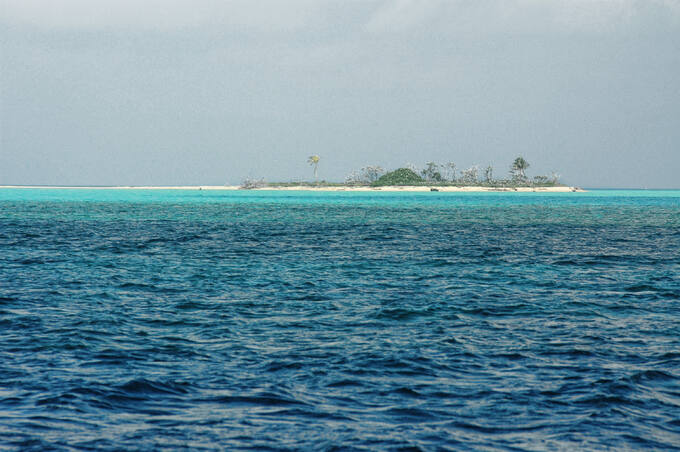Case study: Tubbataha
The Tubbataha Reef Marine Park covers 96.828 ha, including the North and South Atolls. It is a unique example of an atoll reef with a very high density of marine species; the North Islet serving as a nesting site for birds and marine turtles.
Raising Awareness
Angelique Songco, World Heritage site manager, and the other managers of Tubbataha Reefs National Marine Park (TRNMP) build support for the site by increasing the awareness of its value among the local population, through posters, videos, leaflets and radio commercials. There are also educational programmes aimed at schools, including photo exhibits and the distribution of bookmarks and leaflets with messages about the Tubbataha Reefs National Marine Park.
In 2003 an event was organized to celebrate the 10th anniversary of inscription as a World Heritage Site. More than two thousand people participated including schools, government officials and the general public. The success of these public outreach initiatives became evident recently when a vessel entered the marine park to fish illegally. Nationals and locals wrote letters to government officials calling for earnest prosecution of the case and local residents even joined rallies to exert public pressure.
"The World Heritage Status of Tubbataha created the impetus for the various sectors of Philippine society to rally behind the imposition of severe sanctions against the poachers." - Angelique Songco
Increasing Protection
The protection of the Tubbataha reefs directly affects people from the nearby Cagayancillo municipality who depend on the reefs for their livelihoods. Residents here originally resented the establishment of the protected area because of loss of access to unrestricted fishing rights. Now however, local communities are invited to attend workshops and participate in the planning for a sustainable fishery and general park management, with the result that the site currently enjoys broad local support.
With the educational initiatives that have been carried out in the locality there is now widespread pride that the marine park is a World Heritage site. Local leaders even endorsed the expansion of the park to include another coral reef within their municipality. Currently the site’s WH status is being harnessed in the campaign for the approval of a new Tubbataha Protected Area Bill.
Enhancing Funding
The Philippine section of the World Wide Fund for nature, (WWF) through the Global Environment Facility and the United Nations Development Program, funded the bulk of management cost from August 2000 until September 2004. In order to guarantee the park’s sustainable funding the Tubbataha Management Board intends to use entrance fee collections as leverage for further grants after 2004. For details of how World Heritage may have contributed to the eventual entrance charge see below in section 5.
Improving Management
The managers identify recent exposure to practices in other marine protected areas as a major factor in improving site management capacity. This exchange of skills and experience was made possible through the World Heritage Centre and other international donors that supported the participation of the Tubbataha park managers in these events.
"Being part of the WH network and meeting some of the other site managers has afforded an exchange of experiences and lessons leading to improved management." - Angelique Songco
Harnessing Tourism
As a natural World Heritage site Tubbataha Reefs became a famous tourist destination. This factor was subsequently exploited by the managers of the park, through the collection of entry fees. A disbursement sharing scheme was developed alongside this so that the local community would benefit. Actual collection started in 2000 and has continued ever since. In Angelique's opinion the World Heritage status of the site contributed to this process as it allowed for higher fees to be demanded from the visiting divers.
"The inclusion of Tubbataha Reefs as a World Heritage Site is a very positive aspect in marketing to tourists, especially foreign, mainly European and American, divers. It gives the reefs a more important status compared to other areas, it is now a must-see destination." - Alex Floro, Dive Boat Operator working in Tubbataha.
The managers of Tubbataha also collaborate with the scuba diving ‘live-aboard’ boat operators in the area, who now contribute to conservation of the site by paying entry fees and collecting fees from their guests. The dive operators also report unusual occurrences and phenomena in the area and report the presence of illegal users.
Future Projects
The site is currently interested in contacting conservation partners to sponsor a mooring buoy project. This project will help the site to further capitalize on the visitors to the marine park whilst offering increased protection to the delicate coral which is easily damaged by conventional anchors.
If you represent a company, organization or other funding agency and you would like to help conserve Tubbataha Reef or partner with a specific project, please mail The World Heritage Centre
More information on Tubbataha can be found on their website Tubbataha Reefs Natural Park
